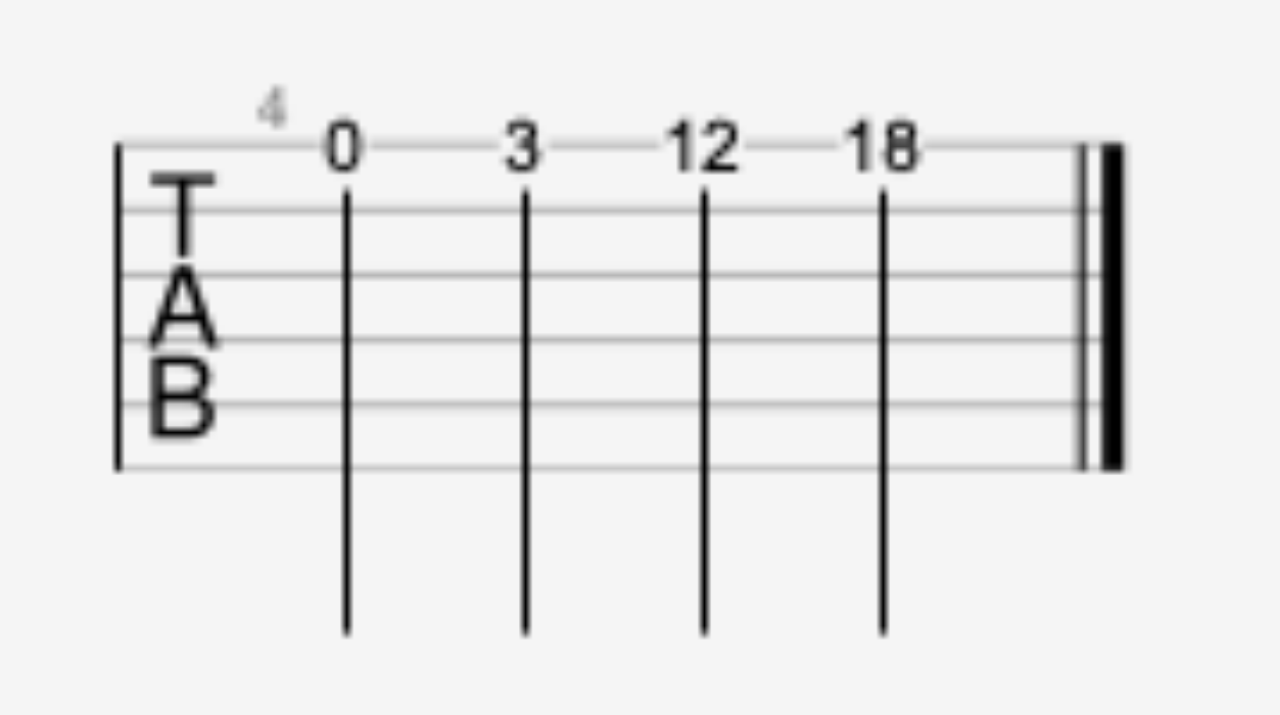Tablature, also known as guitar tabs, is a universally accepted method of notation for the guitar. It uses six equally spaced lines to represent the six strings of the guitar, making reading guitar tabs incredibly intuitive and easy.


When learning how to read guitar tabs, you need to understand what these lines and the numbers on them represent. In addition, there are some special symbols that we need to understand. Today, we will delve into how to read guitar tabs correctly.
Notes and Strings
In guitar tabs, the six lines each represent one string on the guitar, with the bottom line representing the sixth string of the guitar.


The numbers written on these lines correspond to the frets on this string.
For example, the numbers 0, 3, 12, and 18 on the top line represent the open string, third fret, twelfth fret, and eighteenth fret notes on the first string, respectively.


Rhythm Indicators
Understanding how to read guitar tabs also requires mastering rhythm indicators. In guitar tabs, different arrows of varying directions and lengths represent strumming patterns based on different rhythms.


In the diagram, the first arrow indicates that the finger sweeps from the sixth string to the first string. The second arrow signifies the finger moving from the first string to the sixth string. The third arrow indicates that the finger sweeps from the sixth string to the fourth string. The fourth arrow represents the finger moving from the first string to the fourth string. In this way, the four arrows of different directions and lengths are played according to different time values.
Notation Methods
Guitar tabs use multiple notation methods. Common ones include: notation for solos, broken chord accompaniment notation, and strumming rhythm notation. In a complete guitar tab, these notation methods often appear simultaneously.
To learn more about strumming notation, please visit: tomasmichaud.com/how-read-strumming-notation/
Symbol Explanation
To read guitar tabs correctly, we also need to understand various symbols on the guitar tabs, such as augmenting lines, diminishing lines, dots, tie lines, and tuplets.
Beam
The short line written to the right of a basic symbol is called an augmentation dot. The more augmentation dots there are, the longer the duration of the note. A basic symbol without augmentation dots is called a quarter note, and each added augmentation dot increases the duration of the note. Conversely, a diminution dash written beneath the basic symbol shortens the duration. The more diminution dashes there are, the shorter the note becomes; each additional diminution dash halves the original duration of the note.




Dots
A small dot written to the right of a note is called a dot, which extends the duration of the preceding note by half. Dots are often used for quarter notes and various notes less than a quarter note. A note with a dot is called a dotted note.


Tie
A curved line used to connect two notes of the same pitch is called a tie. Ties can be used consecutively, connecting many notes of the same pitch together. The several notes connected by a tie are sung or played as one note, and its length equals the sum of these notes.

Tuplet
A tuplet is a note value divided freely, replacing the basic division of notes. Tuplets are marked with an arc in the middle plus Arabic numerals. The most common tuplet for beginners is the triplet.


By understanding all the knowledge mentioned above, you can start trying to read guitar tabs. For more tips on reading and playing guitar tabs, feel free to refer to this Beginner's Guide: How to Read and Play Easy Guitar Tabs.
If you find this article helpful, feel free to share it with your friends via the social media buttons below.
Want more resources for learning the guitar? Feel free to visit: chorddance.
For more free beginner-friendly guitar tabs, feel free to visit: 81gp tabs.
If you find this article helpful, share it with your friends on social media, and don't forget to sign up for our newsletter for more tips and tricks to master the guitar.




